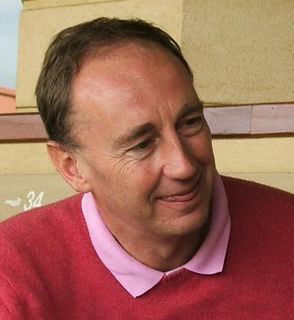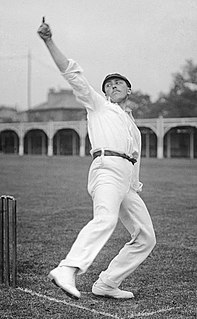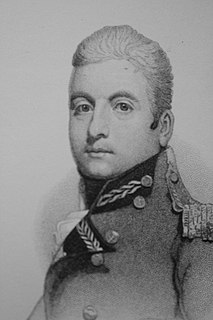The Wisden Cricketers of the Year are cricketers selected for the honour by the annual publication Wisden Cricketers' Almanack, based primarily on their "influence on the previous English season". The award began in 1889 with the naming of "Six Great Bowlers of the Year", and continued with the naming of "Nine Great Batsmen of the Year" in 1890 and "Five Great Wicket-Keepers" in 1891.

Jonathan Philip Agnew, is an English cricket broadcaster and a former professional cricketer. He was born in Macclesfield, Cheshire, and educated at Uppingham School. He is nicknamed "Aggers", and, less commonly, "Spiro" – the latter, according to Debrett's Cricketers' Who's Who, after former US Vice President Spiro Agnew.

Frederick Somerset Gough Calthorpe, styled The Honourable from 1912, was an English first-class cricketer.

Wilfred Rhodes was an English professional cricketer who played 58 Test matches for England between 1899 and 1930. In Tests, Rhodes took 127 wickets and scored 2,325 runs, becoming the first Englishman to complete the double of 1,000 runs and 100 wickets in Test matches. He holds the world records both for the most appearances made in first-class cricket, and for the most wickets taken (4,204). He completed the double of 1,000 runs and 100 wickets in an English cricket season a record 16 times. Rhodes played for Yorkshire and England into his fifties, and in his final Test in 1930 was, at 52 years and 165 days, the oldest player who has appeared in a Test match.

John "Jack" Ryder, MBE was a cricketer who played for Victoria and Australia.

Lt. Col. Sir Pusapati Vijay Ananda Gajapathi Rajupronunciation (help·info), better known as the Maharajkumar of Vizianagram or Vizzy, was an Indian cricketer, cricket administrator and politician.

John Wisden was an English cricketer who played 187 first-class cricket matches for three English county cricket teams, Kent, Middlesex and Sussex. He is now best known for launching the eponymous Wisden Cricketers' Almanack in 1864, the year after he retired from first-class cricket.

John ("Johnnie") Charles Clay was a cricketer who played for Glamorgan County Cricket Club. Clay also played one Test match for England.

George Gordon, 9th Marquess of Huntly, KT, styled Lord Strathavon until 1795 and known as The Earl of Aboyne from 1795 to 1836, was a Scottish peer.
Hedley John Howarth was an international cricketer who played 30 Tests and nine One Day Internationals for New Zealand. The elder brother of Geoff Howarth, former New Zealand captain, he was born and died in Auckland.

John Neil Shepherd is a former West Indian cricketer who played in five Test matches from 1969 to 1971. Shepherd had a long career in English county cricket for Kent County Cricket Club and Gloucestershire County Cricket Club. He was born in Belleplaine, St Andrew in Barbados and played for the Barbados cricket team in his early career.
Alma Victor "Champ" Hunt was a Bermudian and Scottish cricketer. He was a left-handed batsman and a right-arm fast-medium bowler.

Thomas Assheton Smith was an English landowner and all-round sportsman who was notable for being one of the outstanding amateur cricketers of the early 19th century. He was a Tory politician who sat in the House of Commons from 1821 to 1837. He was also known for his pioneering work on the design of steam yachts in conjunction with the Scottish marine engineer Robert Napier.
Raymond George "Ray" Flockton was an Australian cricketer who played first-class cricket for New South Wales.
Hubert (Bert) Hunt, born at Long Ashton, Somerset, on 18 November 1911, and died at Pill, Somerset on 29 November 1985, played in 11 first-class cricket matches for Somerset in the 1936 season.

John Edward Raphael was a Belgian-born sportsman who was capped nine times for England at rugby union and played first-class cricket with Surrey. He was also a Liberal politician.
Edmund Anthony Jefferson Maynard was an English cricketer who played for Derbyshire from 1880 to 1887 and captained the side for two seasons.
Not to be confused with George E Hunt, who made 233 appearances for Somerset.

John B. "Jack" Sidoli was an Australian rules footballer for Port Adelaide in the 19th century, noted for his versatility. He also played cricket for South Australia, and was a member of the Royal South Australian Yacht Squadron. He was both a football and cricket umpire.

David Watt was an Australian cricketer. He played seventeen first-class matches for Western Australia between 1938 and 1949.














